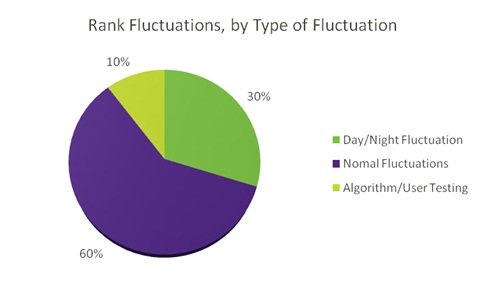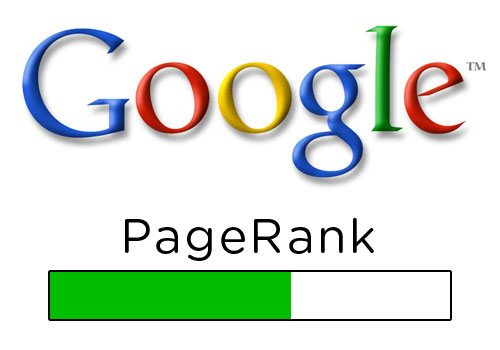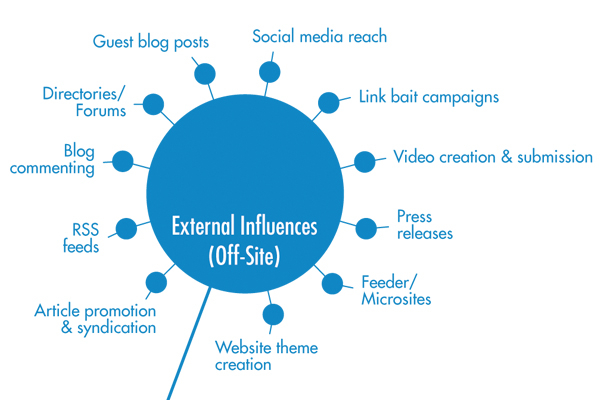
Why Your Google Ranking Keeps Fluctuating
September 27, 2016
5 Simple Ways to Increase Sales by Developing a Better Page Rank
September 27, 2016When it comes to getting good page rankings and practicing natural, organic site and search engine optimization, link building is important. But the way that you go about link building will have a big impact on your site and its relevance to search engine results.
Why is that? Link building occupies a particular place in best SEO work for a number of reasons. However, it’s become super-important largely because of changing Google algorithms that weigh high quality link building is a major positive for a site, while discounting low quality links.
What Is Link Building, and Why Is It Done?
Link building is the practice of acquiring hyperlinks from another site to a target site. It’s called ‘offsite SEO,’ because the actual work and installation doesn’t occur on the target website. For example, if you have a page about garden sprinklers, and there is a link somewhere else on the web that directs users to that page with a hyperlink, that’s link building. So how do site owners have control over link building if it’s offsite? That’s one of the complicated questions around link building and how it has to be done very carefully.
Link building is done to get better page rankings, but it’s also done to build relationships. When people do things like guest blogging or asking other people to link to a page, they’re setting up associations between different websites, not just hyperlinks, but conceptual links that show how two different sites are related, or how outside users view their website.
The Value of High Quality Links
That said, there’s a difference between good organic links and link spamming or ineffective links. Google has developed skilled algorithms that will crawl the web and look for high quality links while also recognizing low quality links. What makes a link high quality? If it’s done in a natural and organic way, it represents a real relationship. By contrast, here are some examples of low-quality links: hyperlinks from untargeted or random blog and forum comments, links on paid ad banners or other paid advertising, and other exterior links that the target site owner doesn’t have control of, and is able to monitor over time.
For example, if a site has dozens of hyperlinks in nonsense text that are spam-posted on an external forum, that doesn’t represent high quality linking. Google might see that as a black mark on the page’s optimization. For this reason, web designers might use a command called “nofollow” in code to make those links not count toward Google ranking results.
How To Get High Quality Links
Here’s where it gets interesting in terms of web strategy: high quality link building is difficult. It’s not as easy as just telling people to post links. As mentioned before, the website owner doesn’t really have control of offsite linking. However, people have come up with some very creative ways to do high quality link building.
One way is to embrace public relations. What does public relations have to do with web design? Isn’t that all done off-line, in the ‘real world?’ Yes, but that real-world public relations stuff is going to generate quality links into a site. One way is through social media, and that’s another major component of organic link building. People might have a public event and encourage various users to post on Facebook about it. That’s one way to generate the kinds of natural links that will boost the site’s page rankings for certain keywords. There is also content marketing, where website owners reach out through the power of online copy and written narratives.
There’s also that whole area of collaborative work that will also build natural links — guest blogging and certain types of blogger relationships can be effective. Forum posting can also be effective, but it’s important to think about whether any kind of link spamming could result, and how to control large numbers of cheap or automated links with a nofollow command (here’s a guide from About.com).
Some people get even more strategic about doing link building the right way. There’s a process called link reclamation, where website owners go out and look for mentions of their website on other websites. They look for places where their business or company or project is mentioned, but there’s no hyperlink. Then they send a letter or e-mail asking that the other site add a link. Link reclamation can be a big part of natural link building (more on link reclamation from Moz.)
Then there’s the use of tools like Scoop It and Help A Reporter Out or HARO. The HARO site really truly represents the process of building these symbiotic relationships. Reporters are going on the site looking for sources, and people who want to promote something are going on the site looking for opportunities. When the two meet in a somewhat direct way, it provides an opportunity to build those business relationships that will lead to link building that’s organic and useful.
Another inventive idea is to create a scholarship in order to get links from educational web domains. It’s something that most marketers would never think of on their own, but again, it’s a way to get those links without paying for them, or asking for them directly. A similar idea would be to run a well-publicized contest on the web to get people participating and adding links. Get more tips from Kaila Strong at Moz here.
In the end, link building is important for various reasons. It shows that a website deserves a certain ranking, because there’s a certain level of organic interest. Google used sound philosophies about what web users want when it started to value link building, and it’s still a major part of creating powerful websites today. Knowing more about link building will help beginning SEO workers to succeed in a competitive World Wide Web.




